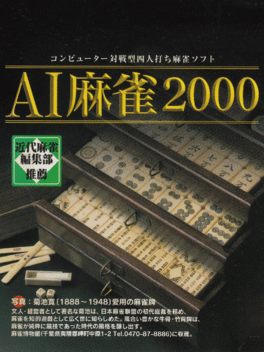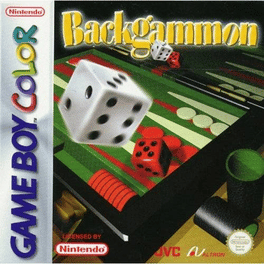New Gamegear Games - Page 54
-
Classic Cribbage
1999
Classic Cribbage
1999
Cribbage is a card game with a pinch of board game. Freeverse have dressed it up with a roaring 20s look. -
Uno
1999
Uno
1999
UNO, the classic card game of skips, draw-twos, and reverses, has come to the Game Boy Advance. There are two modes of play: Standard and Challenge. Standard has the players keep going until they reach a specified number of points, usually 1000. However, a player only scores points when he gets rid of all the cards in his hand. The points are the total value of the cards left in the opposition's hands. In Challenge, each player has a set number of points, and a player is eliminated when he reaches the point total. Play continues until one player is left standing. In both modes, you can play against up to three computer-controlled opponents. You can also play a single human opponent via a link cable. As an added bonus, there are three new cards that are not part of the real-world game. Now you can play UNO by yourself. -
Goemon: Mononoke Sugoroku
1999
Goemon: Mononoke Sugoroku is a video game for the Nintendo 64, released in 1999. The game is based on the Goemon series and despite the series' relative popularity in the west for the system, the game was released only in Japan. The game is based on the Japanese board game Sugoroku, populated with Konami's array of Ganbare Goemon characters. Up to four players control two dice, and take them in turns to control Goemon, Ebisumaru, Sasuke, or Yae over pre-rendered boards that resemble previous locations in the Ganbare Goemon series. -
Nippon Pro Mahjong Renmei Kounin: Dojo Yaburi 2
1999
Nippon Pro Mahjong Renmei Kounin: Doujou Yaburi 2 is a Majong board game, developed by Naxat Soft and published by Chat Noir, which was released in Japan in 1999. -
Chocobo Collection
1999
Chocobo Collection
1999
This game celebrates the 10th Anniversary of the Chocobo character from the Final Fantasy series and includes the games: - Chocobo Stallion - Chocobo Racing - Dice de Chocobo Chocobo Stallion and Chocobo Racing were released previously for the PlayStation and were included in this compilation without any changes made to them. Dice de Chocobo was first released in this compilation as an original game. It was later planned for release on the WonderSwan, but after that was cancelled it was remade and released for Gameboy Advance in 2002 under the name Chocobo Land: A Game of Dice. The game is a board game slightly similar to Monopoly. -
Monopoly
1999
Monopoly
1999
Mr. Monopoly is your Master of Ceremonies as the rich characters and colorful worlds of the Atlantic City Boardwalk come to life in full 3D animation! The best-selling board game of all time is better than ever with incredible N64 real-time graphics and expanded features. The board is spread across a picturesque panorama of mountains and houses. Other visual elements include a colorful cast of animated tokens, each flaunting a unique personality and whimsical humor. Enjoy classic Monopoly gameplay with non-stop wheeling and dealing from the rolling lawns of Park Place to the lowly back yards of Baltic Avenue. -
Sweet Ange
1999
-
Momotaro Dentetsu V
1999
Momotaro Dentetsu V
1999
Momotaro Dentetsu V is a video game in the Momotaro Dentetsu series of board game-style video games, genre released in 1999 by Hudson Soft for PlayStation. The game was only released in Japan. -
Ide Yosuke no Mahjong Kyoushitsu
1999
Ide Yōsuke no Mahjong Kyōshitsu is a Mahjong learning and practice game featuring Mahjong professional Ide Yōsuke. The game has a number of lessons shown with a manga style drawn Ide Yōsuke explaining the rules of the Chinese classic board game of Mahjong, and allows the player to try what they have learn on Mahjong boards. -
Monopoly Casino
1999
Monopoly Casino
1999
From poker and roulette to blackjack and slots, it's casino fun for everyone. Play all the most popular casino games in a 3-D Monopoly casino. Choose a favorite token, pick a game on a deed card, and try your luck on over 40 Monopoly themed games with over 200 variations! -
AI Mahjong 2000
1999
AI Mahjong 2000
1999
Ai Mahjong 2000 is a mahjong game that features 3 different kind of board background colours and different opponent difficulty levels. -
Saikyou Todai Shogi 2
1999
Saikyou Todai Shogi 2 is a shogi game that features different difficulty levels, different game modes (vs, training, tournament, etc.), etc. The game features also an auto mode in which the player can watch and learn how to play watching the different computer movements. -
Chessmaster
1999
Chessmaster
1999
This portable version of the game comes with 16 different skill levels along with multiple features incorporated including color and sprite choices for the board and pieces, a teaching mode, move automations, customizable game rules, a clock, chess board orientations, a move counter, and chess piece coordinates. -
Pro Mahjong Kiwame for WonderSwan
1999
Pro Mahjong Kiwame for WonderSwan is a Miscellaneous game, developed and published by Athena, which was released in Japan in 1999. -
SuperLite 1500 Series Hanafuda II
1999
Hanafuda II is a table top card game, developed and published by Success, which was released in Japan in 1999. -
Pro Mahjong Kiwame Tengensenhen
1999
Pro Mahjong Kiwame is a four player Riichi mahjong game, unlike most one-on-one Mahjong games released at the time and the modern casual games. Players take and discard tiles until they've completed hands by forming groups and pairs. -
SuperLite 1500 Series: Cards II
1999
"Cards II" includes 6 types of standard card games that can be played whenever you want: "Black Jack", "Poker", "Daifugo", "Pyramid", "Concentration" and "Speed". Have fun with these card games! -
Backgammon
1999
-
Glint Glitters
1999
Glint Glitters
1999
Glint Glitters features a group of young kids experts in robotics that build robots. One day when the main character is building a small robot his rival in the classroom appear with a bigger robot and tell him that he's going to participate in the robots competition. So he decided to build a bigger version of his robot and take part on the competition too. The competition is a board game in which the winner is the first one in arrive to the goal (get 20000 of gold). During the board there will be events, traps, shops (Where the player can buy items for his character or the robot) and other situations that can help or act against the players. The game features 2D cartoon graphics, japanese voices and anime sequences. -
Palm Town
1999



















